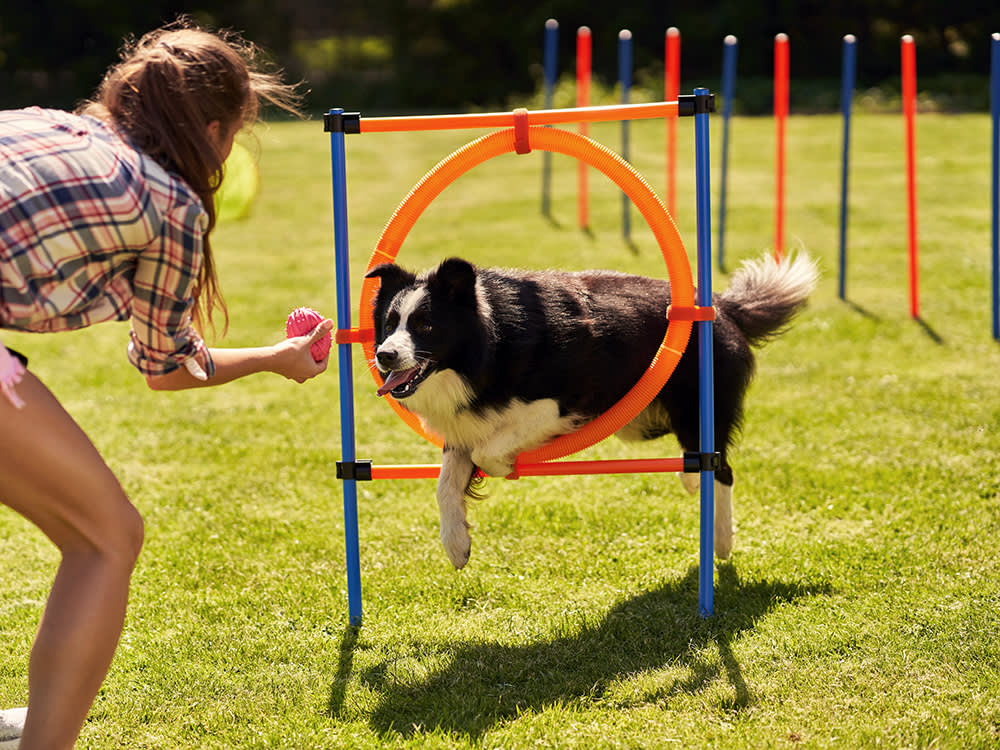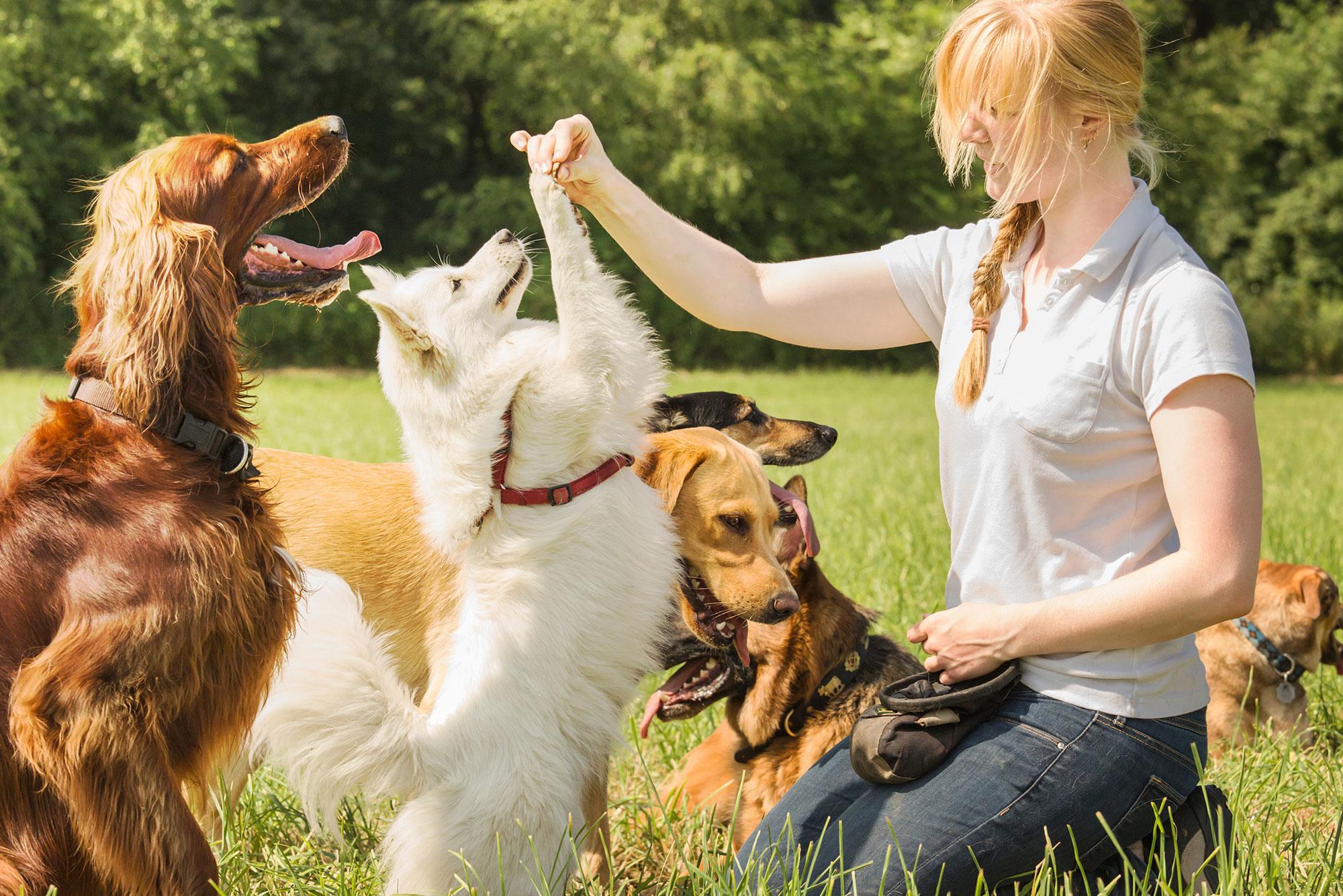How to Select the Right Method for Effective Dog Training
Important Tips for Successful Dog Training: A Guide for Pet Owners
Reliable dog training is a diverse procedure that needs a tactical technique customized to both the family pet's temperament and the proprietor's purposes. Comprehending how to navigate these barriers can significantly improve the training experience, ultimately changing the connection between owner and pet.
Comprehending Canine Behavior
Comprehending pet dog habits is crucial for reliable training and fostering an unified connection between dogs and their proprietors. Dogs communicate mostly through body movement, vocalizations, and activities, making it critical for proprietors to translate these signals accurately. Recognizing a dog's posture, tail setting, and ear alignment can supply understandings right into its mood. A wagging tail does not always indicate happiness; it can likewise signify enjoyment or anxiousness.

Socializing plays a substantial function in pet habits; direct exposure to numerous settings, individuals, and other animals can considerably influence a pet's character. Additionally, elements such as breed qualities and private character ought to lead training approaches, as some breeds might have certain behavior qualities that require customized methods. By comprehending these components, owners can develop a supportive environment that urges positive behavior, causing effective training end results and a much deeper bond with their animals.
Establishing Consistent Commands
Effective interaction with your canine starts with establishing constant commands. This fundamental aspect of training is vital for fostering understanding in between you and your pet dog. Consistency in the commands you make use of makes certain that your pet can dependably link certain words or expressions with the preferred actions.
When selecting commands, pick clear, distinctive words that are simple to claim and distinguish from each other. Prevent using similar-sounding commands that might perplex your pet dog. For instance, using "rest" and "remain" is appropriate, however "sit" and "hit" can bring about misunderstandings.
Additionally, maintain the same tone and volume for each and every command. Dogs are delicate to vocal hints, so differing your tone can create complication.
It is just as crucial to guarantee that all relative get on the exact same page relating to the commands utilized. A united front in command usage will stop mixed signals and strengthen the discovering procedure.
Positive Reinforcement Techniques
The power of favorable reinforcement in pet dog training hinges on its capability to motivate desired habits with rewards and appreciation. This technique is grounded in the principle that behaviors complied with by beneficial end results are more probable to be duplicated. By incorporating positive reinforcement into your training program, you can efficiently form your dog's actions in a useful way.
To execute favorable reinforcement, it's necessary to recognize what motivates your canine, whether it be deals with, playthings, or verbal appreciation. When your canine carries out a preferred action, such as remaining on command, right away compensate them with a treat or affection. This association between the command and the positive result strengthens their understanding.
It's crucial to timing the benefits appropriately; supplying the support within secs of the wanted habits helps your pet dog make the connection (dog training). Furthermore, consistency is Discover More Here crucial-- make certain that all relative use the very same commands and incentive systems to stay clear of confusion

Progressively, you can lower the frequency of treats as your pet discovers the actions, transitioning to commend or intermittent benefits. This approach not just fosters a solid bond in between you and your pet dog but also advertises a positive knowing atmosphere, making educating an enjoyable experience for both.
Socialization and Communication
Continually exposing your dog to a selection of environments, individuals, and various other animals is critical for their social growth. Socializing ought to begin early, ideally throughout the critical window of 3 to 14 weeks, when young puppies are most receptive to brand-new experiences. Older dogs can likewise profit from recurring socialization initiatives.
Present your canine to various settings, such as parks, pet-friendly shops, and metropolitan locations. This direct exposure assists them adjust to numerous stimuli, reducing anxiety and concern actions. Encourage favorable interactions with various other pet dogs and people, making sure that these experiences are risk-free and controlled to foster confidence.
Utilize structured playdates with genteel dogs, as this can improve your pet's social abilities and show them proper habits. Obedience classes and training sessions likewise give excellent opportunities for socializing, allowing your pet dog to engage with others in a monitored environment.
Monitor your pet dog's body movement throughout communications, as this will certainly help you assess their convenience degree. Slowly increase exposure to even hop over to these guys more challenging scenarios while ensuring that each experience is positive. A well-socialized pet dog is much more most likely to display balanced habits, making them a joy to have in any type of setting.
Addressing Usual Training Obstacles
Every canine proprietor will certainly encounter training challenges at some factor, no matter their dog's age or socialization degree. Recognizing typical issues such as stubbornness, interruptions, and terror can assist in establishing efficient approaches for improvement.

Progressively present distractions as the pet dog comes to be extra competent in commands. Short, constant training sessions are also efficient in maintaining focus.
Terror can hinder a dog's understanding process. Gradual desensitization to the resource of concern, coupled with favorable reinforcement, can assist alleviate anxiousness. Patience is critical; never ever force a pet dog right into a circumstance that creates distress, as this may intensify the problem.
Ultimately, understanding and resolving these common difficulties with an organized technique will foster a more efficient training experience, reinforcing the bond between canine and proprietor while advertising efficient understanding.
Conclusion
In summary, successful dog training relies upon a comprehensive understanding of canine actions, the facility of consistent commands, and the application of positive reinforcement techniques. Socializing plays an important duty in developing well-adjusted animals, while addressing usual training obstacles calls for persistence and flexibility. By applying these necessary techniques, animal proprietors can promote a solid bond with their pets and promote desirable habits, ultimately leading to an unified relationship in between human beings and their canine buddies.
Recognizing pet dog actions is vital for effective training and promoting an unified connection in between pooches and their owners.Socializing plays a considerable role in canine habits; direct exposure to numerous environments, people, and various other pets can dramatically influence a pet's character.The power of favorable reinforcement in canine training lies in its capacity to urge preferred behaviors via benefits and appreciation. By incorporating favorable reinforcement into your training regimen, you can efficiently form your pet dog's behavior in a useful manner.
In recap, effective canine training counts on a detailed understanding of canine habits, the facility of consistent commands, and the application of favorable support methods.